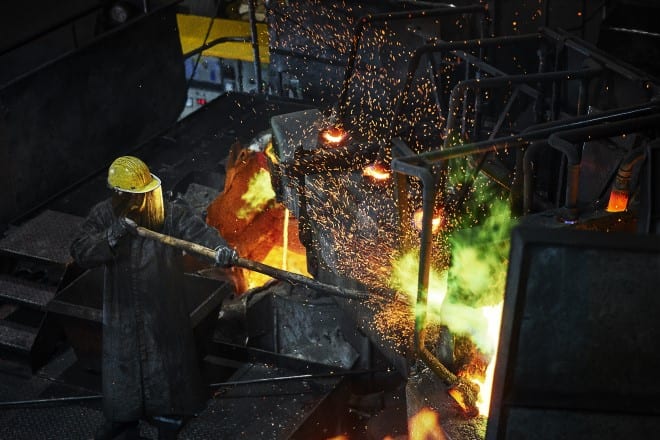Copper prices have recently been hitting record highs. Portfolio manager Tal Lomnitzer explains why and discusses the implications.
Key takeaways:
- Copper prices have reached record highs recently as economies reopen due to various supply and demand factors.
- While there may be short-term movements in copper prices and copper-related equities, demand for this natural resource is supported by its key role in the decarbonisation of the global economy.
I could start this article establishing the vital role copper has played in civilisation since its discovery in the Neolithic era nearly 10,000 years ago, but suffice to say copper – more than many other natural resources – represents progress. When it is in demand, it means industries and economies are moving forward.
Often known as Dr Copper for the uncanny way its price anticipates future economic activity, in May this year, copper prices hit an all-time high of more than $US10,700 per tonne1. Coming up from three-year lows in the midst of the COVID-19 induced recession in 2020, current prices reflect a strong rebound as the global economy switches back on. But are these prices merely a post-COVID phenomenon or is there more to it?
What is pushing prices higher?
There are various forces at play that are affecting the price of copper, but for ease of explanation a simple way to group them is into supply and demand factors.
Supply factors:
- COVID-19 dislocation: the COVID-19 pandemic resulted in widespread lockdowns leading to a drop off in global copper supply at all points in the supply chain. As the COVID-19 crisis has eased in some countries, supply chains are returning to their normal pre-pandemic operating levels.
- Lack of new discovery: according to Standard & Poor’s, of the approximately one billion tonnes of copper resources discovered since 1990, only 8% has been discovered in the past decade.2 This is despite exploration expenditure between 2009-2019 seeing a 68% increase on the prior decade.3 Given it can take around 20 years for production to commence following discovery, this represents a long-term supply-side issue.
- Diminishing ore quality: copper ore is finite in supply and its quality has declined, which means more rock needs to be mined and processed in order to extract the same amount of copper. In Chile, the world’s largest copper producer, average copper ore grades have deteriorated by around 30% since 2005.3
- Scrap supplies: while scrap metal supplies of copper are a viable and important source of supply, scrap historically takes time to respond to market dynamics. Given COVID-19 related logistical constraints, supply deficits are expected in the near term, further strengthening copper prices.
Demand factors:
- Post COVID-19 activity and fiscal stimulus: the return to ‘normal’ activity, as well as making up for lost time through the COVID-19 lockdowns are a strong, but likely shorter-term impact. Against the backdrop of mega trends such as mass urbanisation, the demand for copper in building construction is one of the largest markets (eg. water pipes, electric wiring). While COVID lockdowns can slow a trend, they cannot stop it completely. Additionally, the unprecedented levels of fiscal stimulus by governments around the world is driving economic activity and thus the demand for copper.
- Clean energy transition: the US climate summit saw a number of nations committing to net zero emissions targets and the US re-signing the Paris Agreement treaty on climate change. Crucially, China’s President Xi also pledged to cut coal consumption starting from 2026 and reiterated the country’s 2060 carbon neutrality target. Two of the world’s largest economies reminded us that they are aligned in their pursuit of lower carbon emissions and promotion of renewable energy. Copper is a key component in renewable infrastructure and electric transportation.

Without copper there can be no decarbonisation
Total demand for copper by clean energy technologies is expected to see a three-fold increase by 20404, requiring additional investment in the near term to ramp up production drastically to meet this demand. Against some of the supply factors mentioned, this will likely put further pressure on copper prices.
Will copper prices keep rising?
In the near term, the precise degree of inventory reductions will be a key determinant of copper prices. Speculative positioning is rather extended and there is a chance that China could slow down its purchasing levels given higher prices, while moderating consumption growth may cause a price correction.
If scrap supply is able to meet demand, easing the pressure on producers, copper prices would also suffer. An optimistic case would see the Chinese government reduce its support policies more gradually, the US Federal Reserve maintain low interest rates to stimulate the economy and European growth surprises. A pessimistic view would see global policy support waning, a growth slowdown and positioning unwinding sharply.
In conclusion
While there may be short-term movements in copper prices and the share prices of copper producers, developers and explorers, demand for this natural resource is supported by its key role in the decarbonisation of the global economy. But at the same time, large sources of new supply will be slow, expensive and difficult to bring to the market.
The Anthropocene Epoch is used to describe the current period in Earth’s geologic history, in which human activity is having a significant impact on the planet. As we attempt to reverse this impact through a new green industrial revolution that offers cheap and clean energy, copper is very much an integral part of the solution.
